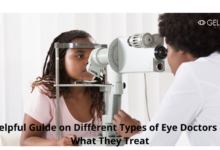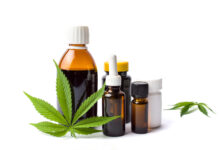Opioid use is at an all-time high. People who get hooked on opioids usually begin by getting a prescription from a doctor for chronic pain. However, as time progresses, they rely increasingly on the medication. Therefore, going “cold turkey” proves dangerous, and medical intervention is necessary.
To respond to an opioid user’s treatment needs, Medical Assisted Treatment (MAT) programs have been set up to help opioid users overcome their addiction to the highly addictive pain medicine.
If you’re looking for opioid treatment programs, you can see more here.
How MAT Programs are Set-Up
When medically assisted opioid treatment programs are set up for opioid users, they comprise a combination of medicines and behavioral therapies. For anyone who has an opioid use disorder or OUD, taking certain medications helps them overcome the physical difficulties that result from weaning off prescription medicines.
Normal brain functioning can be re-established over time by establishing MAT programs for OUD users. When this occurs, the patient’s cravings for opioids no longer overwhelm them, preventing the danger of a relapse. The longer the patient undergoes the therapy, the better they feel – something that makes it easier to control the dependency and take those all-important steps toward recovery.
More specifically, MAT involves using drugs, such as Buprenorphine, which is called by its trademarked name of Suboxone, Methadone, and Naltrexone. Because Buprenorphine and Methadone are opioid medications, some people are confused about their treatment of an OUD problem. However, evidence-based research shows that opioid users who take the medicines as prescribed avoid issues that lead to crime, employment difficulties, or interpersonal disagreements.
In addition, the administration of therapy drugs prevents patients from using needles, which can trigger HIV or high-risk behaviors that lead to the transmission of HIV. Receiving the drugs in a MAT program gives opioid users more confidence to engage more often in counseling and other recovery protocols of their treatment plan.
Psychosocial Services
Treatment medicines are only a tiny part of this form of therapy. The programs also emphasize psychosocial services, such as cognitive-behavioral therapy (CBT), peer and recovery support, contingency management, and motivational interviewing. All these therapies offer their benefits with respect to psychological support and care.
How Treatment Drugs Help Users
The use of methadone in medically assisted treatments prevents unwanted withdrawal symptoms and reduces opioid cravings. The drug is also used to prevent euphoria when an opioid user takes drugs. It is taken orally and is known to have a long history of use in the medical treatment of opioid abuse.
Buprenorphine is defined as a synthetic opioid. However, it does not create a feeling of elation or sedation that is related to opioid dependence. The drug carries a low risk for overdosing as well. The medication is offered in two forms – dissolved sublingually or beneath the tongue and one given by injection. A common form of medicine is given as Suboxone, which mixes buprenorphine with naloxone.
The third medicine used to treat opioid abuse is naltrexone, another synthetic opioid used to block the binding of opioids to the brain’s receptors. The drug, after detox, carries no potential for dependency. However, anyone who suffers from depression or has problems with liver disease should be carefully evaluated before the drug is given or used.
Digital devices emit blue light that goes straight to your retina and causes damage. Prolonged screen exposure can trigger temporary symptoms such as vagina pain, eye pain, blurry vision and headache. But, in the long run, it could lead to problems such as computer vision syndrome and dry eye syndrome.



